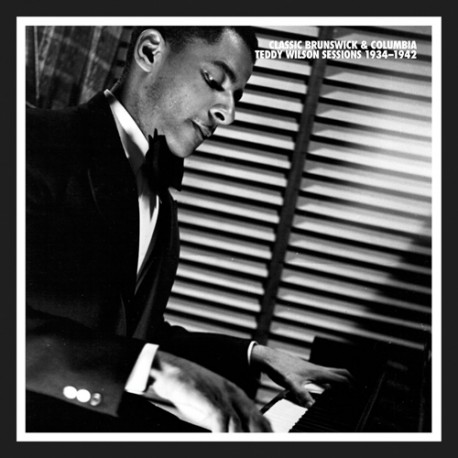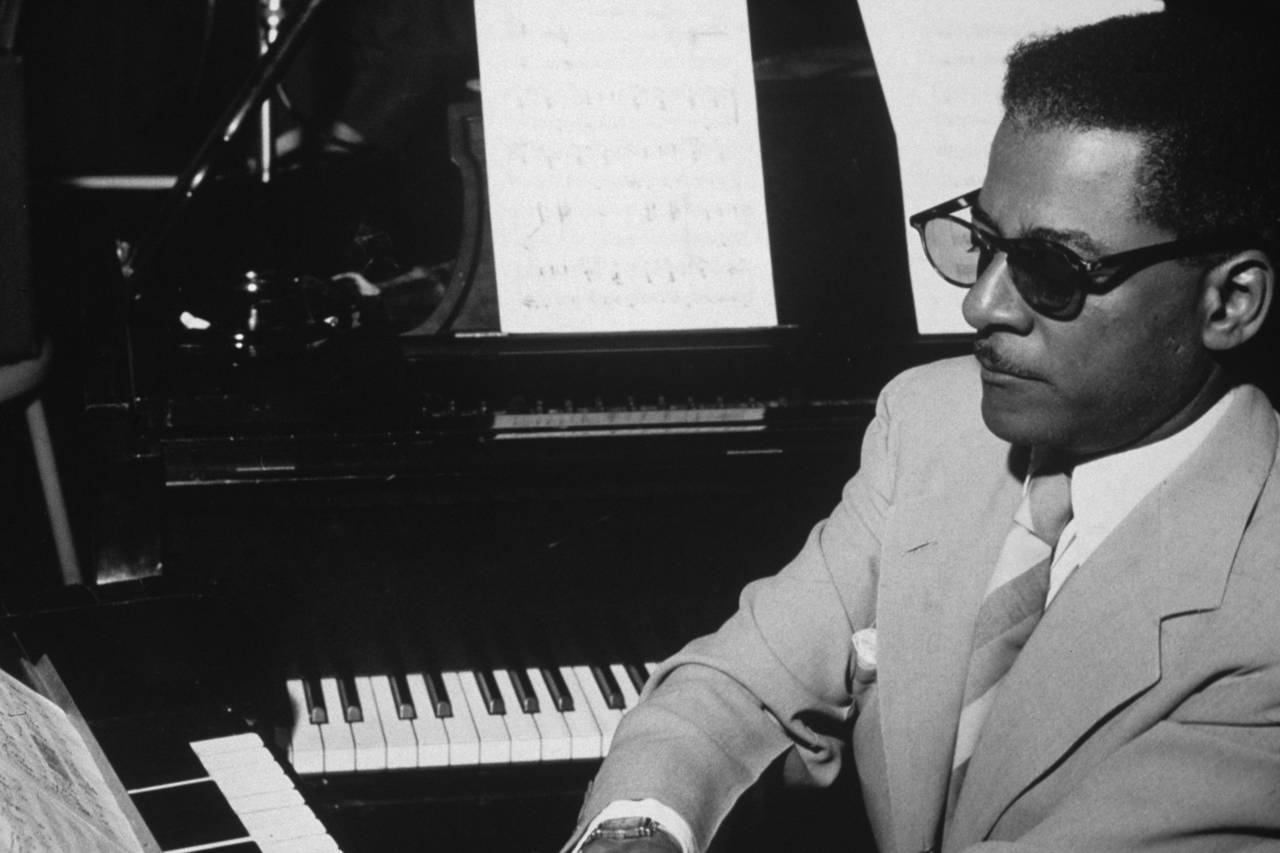Artist: TEDDY WILSON
Album: …SESSIONS 1934-1942
© Copyright 2018 – MOSAIC RECORDS
Reviewed By David R. Adler

1934-1942
Jazz Artistry Now –There was no reason to doubt that Classic Brunswick & Columbia Teddy Wilson Sessions 1934-1942 would meet the high standard for historical boxed sets that Mosaic Records has set since its inception.
Yet still, it’s a delightful surprise: the exhaustive discographical work, the mesmerizing photographs, the granular detail and analysis in Loren Schoenberg’s 23-page essay, the timeless beauty and discovery lurking in the music itself.
One couldn’t wish for a more satisfying look at Theodore Shaw Wilson (1912-1986), a modest individual and master of restraint who nonetheless came to stand astride the history of jazz piano like a giant.
One says “restraint,” yet make no mistake: Mr. Wilson possessed a formidable technique. The jaw-dropping runs that erupt throughout these sides make it very clear.
The uptempo showpieces “China Boy” and “Liza (All the Clouds’ll Roll Away)” make it clear. Where Mr. Wilson differed from other virtuosos was his “ability to draw the listener in with understatement, the antithesis of both [Earl “Fatha”] Hines and [Art] Tatum,” Schoenberg writes.Mr. Wilson’s playing had breakneck speed and execution but also breath and space, and bounteous, irresistible swing. (He learned it from one of his earliest employers, Louis Armstrong.)
We begin the seven-CD journey in 1934, with glorious solo piano filling up a good part of Disc I. Mr. Wilson, Schoenberg explains, is far more of a chops player in the Hines-Tatum mold on these early recordings, just before he made history and broke the color line with Benny Goodman’s small group in 1935.
The level of invention is even more evident when we weigh the alternate takes (many previously unissued, usually appended later in a playlist rather than stacked consecutively). Schoenberg talks us through minute differences — a modulation switched around, an experimental intro later omitted, and so forth. Simply put, this is improvisation, and with these alternates, we can appreciate more deeply what the practice encompassed in the pre-bop era.
From Goodman’s ranks, Mr. Wilson ventured forth as a swing bandleader in his own right, but he lacked the showbiz sense and charisma of a Lionel Hampton or a Gene Krupa, his Goodman bandmates.
The Teddy Wilson Orchestra ultimately fizzled, but not before issuing a trove of recordings of lasting value (and some, Schoenberg readily admits, not so much).
The Mosaic set focuses heavily on these orchestra lineups, starting in 1936 with eight players and growing to 12 by 1939. Goodman plays on some sides (at one point under the pseudonym John Jackson), as do Hampton and Krupa. Major Ellingtonians also appear, including Cootie Williams, Harry Carney and Jimmy Hamilton but most of all Johnny Hodges and Ben Webster, both in breathtaking form, with John Kirby and Cozy Cole driving the rhythm section.

Teddy Wilson – SESSIONS 1934-1942
There’s a large amount of vocal material, most notably with Helen Ward, Lena Horne and, some two years prior to her 1938 breakthrough with Chick Webb, Ella Fitzgerald.
Tucked away among it all is a priceless quartet session from mid-1937, a configuration without drums featuring Mr. Wilson, Red Norvo on xylophone, Harry James on trumpet and John Simmons on bass. The tunes are “Ain’t Misbehavin’,” “Honeysuckle Rose” and a two-part original Wilson blues, “Blue Mood,” which Franklin Marshall Davis, according to Schoenberg, described as “belong[ing] in that select circle of perfect performances.” The lightfooted chamber-like texture is a harbinger of jazz to come.
Mr. Wilson wrote a smattering of originals, and while Schoenberg views them as of generally lesser substance, they’re fascinating to hear: a blistering, almost Gillespie-ish “Booly-Ja-Ja”; an Ellington-style “jungle” number called “Lady of Mystery”; the riff-based vehicles “Early Session Hop,” “B Flat Swing,” “A Touch of Boogie” and “Jumpin’ on the Blacks and Whites”; a Helen Ward-sung ballad, “You’re My Favorite Memory”; and an easygoing major-key solo piano “Teddy Wilson Original” (which cuts off in the middle). Much of this work involved Buster Harding and Edgar Sampson, either as arrangers or co-composers.
By Discs VI and VII (and the end of Disc V), the programming shifts: now we get consecutive master and alternate takes, solo piano and trio from 1941, including two takes of a previously unknown “Love Me or Leave Me.”
There are 10 takes in a row of Mr. Wilson playing “I Surrender Dear” unaccompanied, and when Schoenberg deems every single one a masterpiece, there’s little reason to quibble. The singing quality of his phrases, the solidity of his time, the harmonic deviations in every take and the free, relaxed way he lights upon them: it’s no less beautiful in 2018, with the whole of jazz’s modernist pantheon in place.
Schoenberg, citing the late Dick Katz, mentions the “step-wise bass lines (particularly the G#)” that Mr. Wilson plays on the bridge of “Body and Soul,” a fresh idea rarely if ever heard from pianists today.
He quotes the late Dr. Billy Taylor, who was “wiped out” when he heard Mr. Wilson’s solo rendition of “Don’t Blame Me” (from Disc III, 1937). “I’d never heard a jazz pianist to make the piano sound like that,” Taylor said.
We can still say the same.

Teddy Wilson – SESSIONS 1934-1942
NOT RATED
Listen and purchase a copy online.
Also, see: MosaicRecords.com

//


The Jazz Artistry Now review of the Classic Brunswick & Columbia Teddy Wilson Sessions 1934-1942 was written by David R. Adler.
Mr. Adler‘s work has appeared in JazzTimes, The Village Voice, Stereophile, The New York City Jazz Record, The Philadelphia Inquirer, Philadelphia Weekly, Down Beat, Time Out New York, City Arts, Jazziz, The New York Times, The New Republic, Slate, The Forward, The Sondheim Review, Fairmont Magazine (Canada), La Tempestad (Mexico), GEO (Germany), New Music Box, All Music Guide, Global Rhythm, Signal to Noise, Coda, Jewish Currents and more.
He is happy to be a contributor to Jazz Artistry Now.
